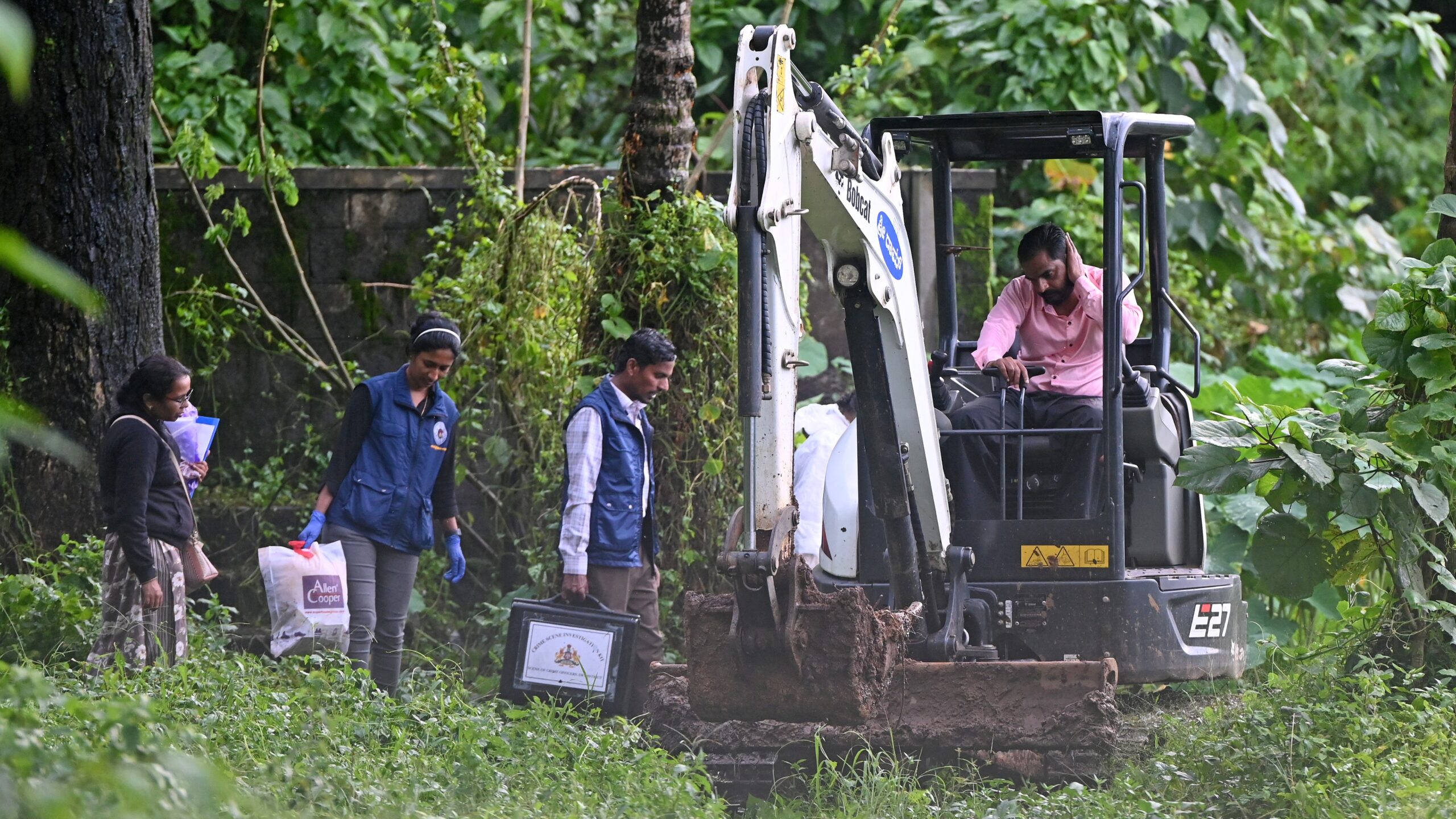In the serene town of Dharmasthala, nestled along the banks of the Nethravathi River in Karnataka, a disturbing controversy has shattered the peaceful image of this revered pilgrimage center. Known for its temples, social service institutions, and long-standing heritage of communal harmony, Dharmasthala has now been plunged into a chilling investigation surrounding alleged mass burials that, if proven true, could become one of India’s most shocking cases of systemic abuse and concealment.
The Allegations That Sparked a Storm
In July 2025, a former sanitation worker made explosive allegations that spanned nearly two decades. According to his testimony, which was filed under the protection of a court order, he had been coerced into burying hundreds of bodies—many of them women and minors—between 1995 and 2014. The most harrowing aspect of the claim was that several of these bodies bore signs of sexual assault and strangulation, hinting at foul play.
The whistleblower’s statements sent ripples across Karnataka and the nation, triggering widespread public outrage, demands for justice, and immediate legal intervention. While the worker’s identity remains under wraps for his safety, the gravity of his claims drew rapid action from the state machinery.
Legal Action and Formation of SIT
On July 4, 2025, the Karnataka government officially registered a case under Section 211(a) of the newly introduced Bharatiya Nyaya Sanhita. Recognizing the sensitivity and scale of the matter, the government wasted no time in establishing a Special Investigation Team (SIT) on July 19.
This SIT comprises senior IPS officers and is tasked with an expansive mandate: to investigate not only the specific burial allegations at Dharmasthala but also similar complaints that may be linked across the state. The team’s composition was carefully structured to avoid political interference, and it was empowered with legal autonomy to pursue leads without bureaucratic delays.
Excavation Begins: Hopes High, Reality Harsh
On July 29, the SIT launched its first major excavation at a location near the Snana Ghatta—an area along the river where the sanitation worker claimed several bodies had been buried. The operation began around noon, with a team consisting of ten manual laborers, forensic experts, crime scene investigators, and additional anti-Naxal and security personnel.
Initial digging was done manually, but heavy rains had made the soil waterlogged. At around three feet, water seepage began to hinder the work. This prompted the team to bring in a mini excavator, which dug deeper. Eventually, they reached a depth of eight feet and a width of 15 feet. However, despite extensive effort, no skeletal remains were found. A canine squad also combed the area but returned without any significant indications.
Terrain Troubles: The Battle With Nature
The excavation team encountered serious challenges posed by the geography and weather. The site, being close to the river, had a high water table. Persistent rains had further softened the ground, mixing clay with sand and turning the pit into slush. This not only slowed down the mechanical excavation but also reduced the chances of retrieving preserved remains, especially if they had been buried many years ago.
Some fragments of cloth were retrieved, but forensic teams could not immediately link them to any criminal activity or human remains. For now, these were logged and preserved for further analysis.
The Bigger Picture: More Sites Await
Despite the inconclusive outcome of the first dig, the SIT is far from done. Officials confirmed that 12 to 14 more sites—also identified by the whistleblower—have been marked for methodical excavation. These include areas along the river, near highways, and in surrounding forest patches.
The plan is to systematically dig at each of these locations, applying forensic best practices to collect any form of physical evidence. Even if human remains are not found immediately, the search is aimed at either validating or disproving the whistleblower’s claims with definitive conclusions.
The Call for Transparency and Protection
The case has attracted intense scrutiny not just from the media and public, but also from human rights organizations. The All India Democratic Women’s Association (AIDWA) passed a resolution calling for full autonomy to be granted to the SIT. Their demand extended beyond this specific case—urging authorities to look into other unresolved deaths, disappearances, and abuse cases dating back to the 1980s and early 2000s.
One of the most pressing concerns remains witness protection. Given the sensitive nature of the claims and the high-profile individuals that may be implicated, ensuring the safety of the whistleblower and any supporting witnesses is crucial to the integrity of the investigation.
Government Assurances
Karnataka’s Chief Minister and Health Minister have both issued statements reinforcing their commitment to justice. They assured that no person, no matter how influential, would be shielded from scrutiny if found guilty. They emphasized that the probe would be conducted strictly under legal protocols, without bending to political or societal pressure.
These statements aim to bolster public trust in the process, particularly at a time when skepticism and unrest have taken root in certain sections of society.
Key Takeaways and Timeline So Far:
| Category | Details |
|---|---|
| Allegation Source | Former sanitation worker’s sworn testimony |
| Time Period Involved | 1995–2014 |
| Primary Claims | Forced burials of women and minors; signs of assault |
| FIR Registered | July 4, 2025 |
| SIT Formed | July 19, 2025 |
| First Excavation Date | July 29, 2025 |
| Excavation Depth | 8 feet deep, 15 feet wide |
| Initial Findings | No human remains found; some cloth fragments |
| Terrain Issues | Slushy soil, high water table, rain-related delays |
| Next Steps | Excavation at 12–14 more locations |
| Public Concern | Demand for transparency and witness protection |
Final Thoughts: A Mystery Still Unfolding
The initial excavation may not have unearthed conclusive evidence, but that does not diminish the seriousness of the allegations. The absence of remains at one location could be due to misidentification, natural degradation, or even deliberate relocation over time.
However, this first chapter only sets the stage for what could be a long and complicated probe. The SIT’s methodical approach—backed by forensic science, legal oversight, and public scrutiny—will be the key to either uncovering a dark chapter of history or putting to rest a disturbing myth.
What remains clear is that the people of Karnataka—and indeed, the nation—deserve clarity. Justice, whether it confirms the presence of a crime or clears innocent names, must prevail.

